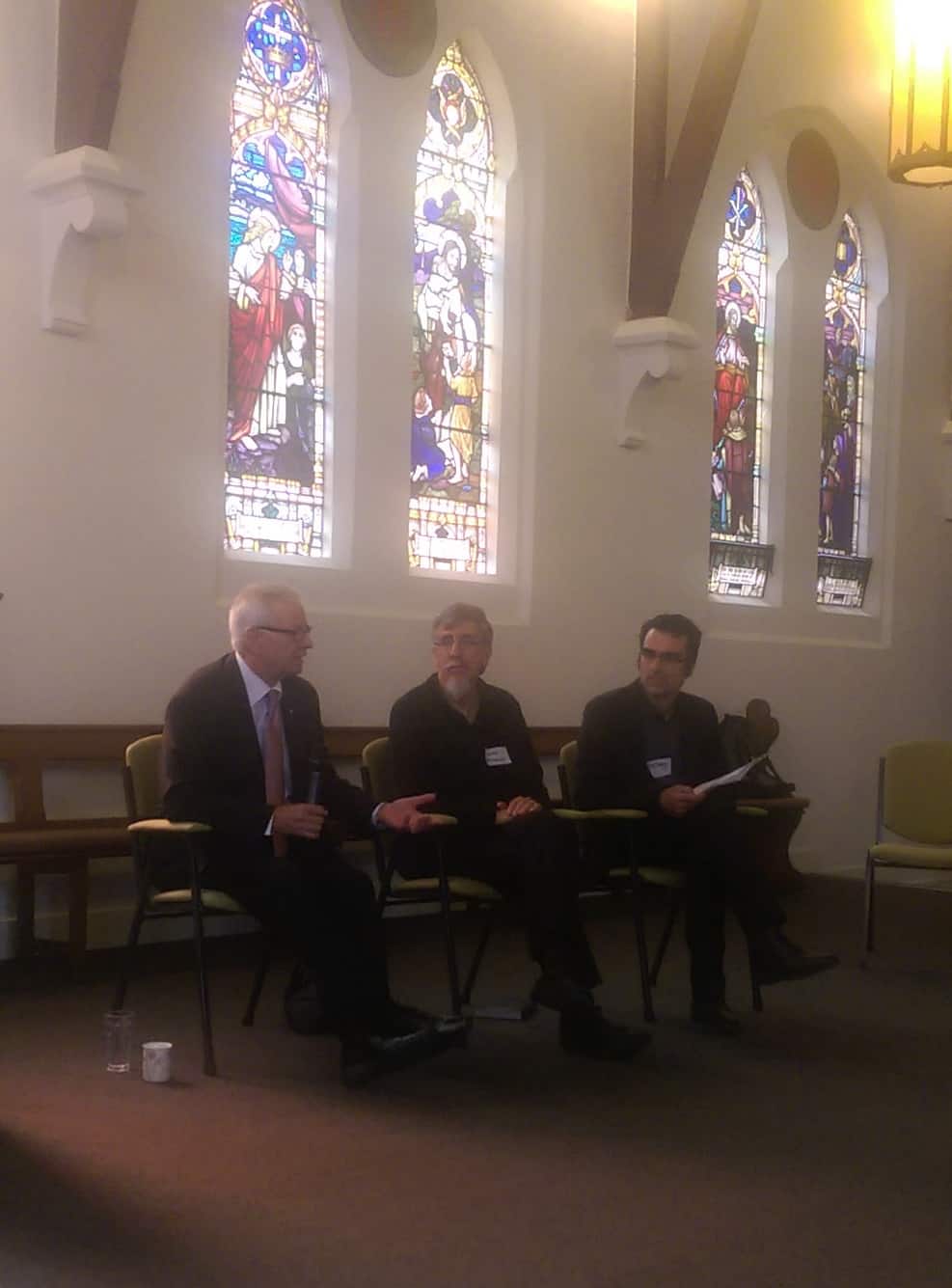To truly understand occupational health and safety (OHS) issues, it is necessary to examine OHS concerns beyond one’s own industry. Recently, this blog has reported on some parliamentary debates on OHS in the horse racing industry. The November edition of The Monthly includes an exposé of the OHS of Australia’s horse racing industry by freelance writer, Madison Griffiths, with lessons for all of us on morality, Godliness, accountability and leadership. The article is paywalled but well worth the purchase.
Category: church
The Spiritualism of HR
“Trust us” is one of the riskiest phrases anyone can use. It may be even riskier to accept it. In workplaces, it is often the start of a relationship, but it can also be the start of betrayal. Part of the risk in starting any new job is that new employees must accept their introductions in good faith, and most introductions are handled by the Human Resources department but is that faith misplaced? Recently, one socialist journal from the United States (yes, the US has a socialist sub-culture …. for the moment), Jacobin, included an article about HR in its religion-themed edition (paywalled).
OHS, organisational culture, sex abuse and the Catholic Church

The discussion of “organisational culture” has tried to remain apolitical or amoral, but it always relies of case studies to illustrate the academic and ephemeral. Largely these studies involve major disasters, but few people work in heavy industry, chemical plants, or offshore oil rigs. Better examples could be sought by looking at other industries, such as the Catholic Church. (I really hope someone is examining this relationship in a PhD)
Sen. Doug Cameron launches “Hard Work Never Killed Anybody”
 On 7 May 2015, Senator Doug Cameron (Australian Labor Party, pictured) launched a new book written by John Bottomley (pictured, centre) called “Hard Work Never Killed Anybody – How the idolisation of work sustains this deadly lie“. Cameron acknowledged the uniqueness of the book as ranging
On 7 May 2015, Senator Doug Cameron (Australian Labor Party, pictured) launched a new book written by John Bottomley (pictured, centre) called “Hard Work Never Killed Anybody – How the idolisation of work sustains this deadly lie“. Cameron acknowledged the uniqueness of the book as ranging
“…across, theology, Marxism, the Protestant work ethic, and the Enlightenment.”
This combination is rare in the field of occupational health and safety but Cameron said that Bottomley provides evidence that
“…the promise of industrialised society that hard work brings its own rewards is a lie”
and that this is a necessary and important challenge to the current political consensus. Continue reading “Sen. Doug Cameron launches “Hard Work Never Killed Anybody””
Work-related suicide gains some fresh media recognition
On 4 November 2011, Victoria’s 7.30 program broadcast a heart-rending story about the suicide of a woman who, her mother believes, took this action after suffering chronic pain due a work-related incident and being given insufficient support from her employer and workers’ compensation bodies. The story of Rebecca Wallis (spelling uncertain) apparently generated sufficient communication to the Australian Broadcast Corporation for 7.30 to undertake a follow-up and more broad look at the relationship between workers compensation and suicide.
One of the people interviewed in the 11 November 2011 program was John Bottomley of the Creative Ministries Network. Bottomley has published several research reports on work-related deaths and suicides. The figures he mentions in the report, that around 30% of the work-related suicides identified in his research had a “work injury or work-related mental illness” as a contributory factor, are included in the online publication from 2002, “Work Factors in Suicide“. What is not mentioned is another statistic in his report:
“Nine people (8%) were on workers’ compensation when they committed suicide.” (page iii) Continue reading “Work-related suicide gains some fresh media recognition”
Prophet and Loss – review
I bought tickets to the Jane Woollard play Prophet & Loss in almost total ignorance of the play and, as a result, sat in the old church on a cold Winter’s night wondering what I was in for. The program was detailed but I hadn’t time to read it. I knew the play was about issues related to workplace death. That’s the “loss”. The “prophet” was Isaiah and that was the element that I could not understand without later reflection.
ignorance of the play and, as a result, sat in the old church on a cold Winter’s night wondering what I was in for. The program was detailed but I hadn’t time to read it. I knew the play was about issues related to workplace death. That’s the “loss”. The “prophet” was Isaiah and that was the element that I could not understand without later reflection.
However, finding out about Isaiah could wait till we got home and then we could research a further dimension to what we saw. The stories that told of the impact of workplace fatalities on families and workmates were compelling although a couple were familiar to me. They told of bureaucratic confusion, the disinterest of insurance company call centre staff, the psychological legacy of a traumatic death and the inability to understand the survivor experience without having experienced it firsthand.
The venue was small but high and so the actors were close and the pain and grief was well presented. All of the actors were very good even though I was sure I had seen one of them before somewhere. It wasn’t till I looked at the program that the actor who looked like Helen Morse was indeed Helen Morse.
The stories’ subjects were frustrating and bleak, there is little opportunity for humour on this topic, but there was opportunity for theatricality and motion. Fanny Hanusin broke the rhythm with her portrayal of Merpati who was hyperventilating in panic over the lack of understanding of her situation. As Glynis Angell, the grief counsellor, Merrilyn, began breathing slowly to decrease Merpati’s panic, most of the audience were breath along.
All of the actors interchanged roles, with each taking a turn as an overcoated Isaiah writing on the wall and speaking ancient Hebrew (I later found out). The role changes worked well on reflection but I could not work out the thematic structure of the play until three-quarters in. The different outfits, the stories, Isaiah, were all confusing because the pairing of the characters with the stories took too long to establish. I am not a great wearer of hats but the different characters could have been more readily identified by the audience with hats, as well as the changing of clothing. Hats are more visible and illustrate different identities more clearly. It may have shortened my confusion.
What differentiated this play from a series of monologues, given that I didn’t understand the Isaiah context, was the music. The soloist, Deborah Kayser, the seraphim, sang beautifully and the acoustics of the venue were ideal although the 13th century language was totally lost on me. (A sample of Kayser’s singing can be heard online) I have never heard a double bass played to such beautiful effect as was played by Nick Tsiavos. The depth of sound from a bow on bass could be felt in one’s chest and how he was able to pluck and stroke those strings at the same time was a mystery until he came into the light in the second half.
Kayser and Tsiavos, the seraphim, were a musical Greek chorus to the tales of grief and frustration. This role was perhaps emphasized by their wings which were effective but initially confusing. Kayser introduced the play in character with words that were cryptic but set the tone for the play.
The staging was effective in its industrial appeal and the use of 44-gallon drums as props and seats worked. Early on the actors slowly rotated these drums to provide a chilling sound which I was hoping for more of throughout the play.
Each character laid out the clothes or uniform of their deceased loved one through the play, providing a useful personal profile that complemented each story. I recall one character had worn her partner’s clothes for three days in a grieving intimacy. She would only relinquish the clothes when they no longer smelt of her partner but now of her.
The play was being performed at the Centre for Theology and Ministry near the University of Melbourne for a limited season and as a lead-in to a major theological conference. The play was supported by the Creative Ministries Network that provides a counselling service for those affected by workplace fatalities.
Prophet & Loss could travel well with its combination of an occupational/social theme, beautiful music and faith. Please look out for it.
“Pilgrim’s Plague” and workplace absenteeism
Last year, Sydney Australia hosted World Youth Day (WYD). In some ways Australia had not seen such a large influx of people from so many countries for a single event before. The Sydney Olympics had a high proportion of locals attending and the 1956 Melbourne Olympics never had the infrastructure to provide so many overseas visitors.
For several months after the 2008 World Youth Day, it was rumoured that the level of absenteeism in workplaces was very high. At the time of WYD there were several reports of quarantined pilgrims and the risk to public health of the Sydney population was assessed. (Peter Curson, professor of population and security in the Centre for International Security Studies at the University of Sydney wrote a discussion piece on this)
There were reports of influenza and viral gastroenteritis amongst pilgrims who were required to be quarantined.
The Medical Journal of Australia has released a report into the impact of World Youth Day on the emergency departments of hospitals (MJA 2008; 189 (11/12): 630-632). This study found minimal impact in this sector of the hospital care.
However, SafetyAtWorkBlog is not aware of any research having been done on the impact of World Youth Day on workplace absenteeism. The EMJA study correlates World Youth Day with hospital admissions but it would be useful to see a comparative study of workplace absenteeism in the weeks after WYD, during the incubation period of influenza in particular.
World Youth Day did seem to overlap with the existing flu season in Australia’s winter but those statistical peaks are well-established and it would be interesting to see if those peaks had increased just after World Youth Day.
If there were a correlation, cost estimates for hosting the event may need adjusting to include the reduced productivity due to the “pilgrim’s plague”.


